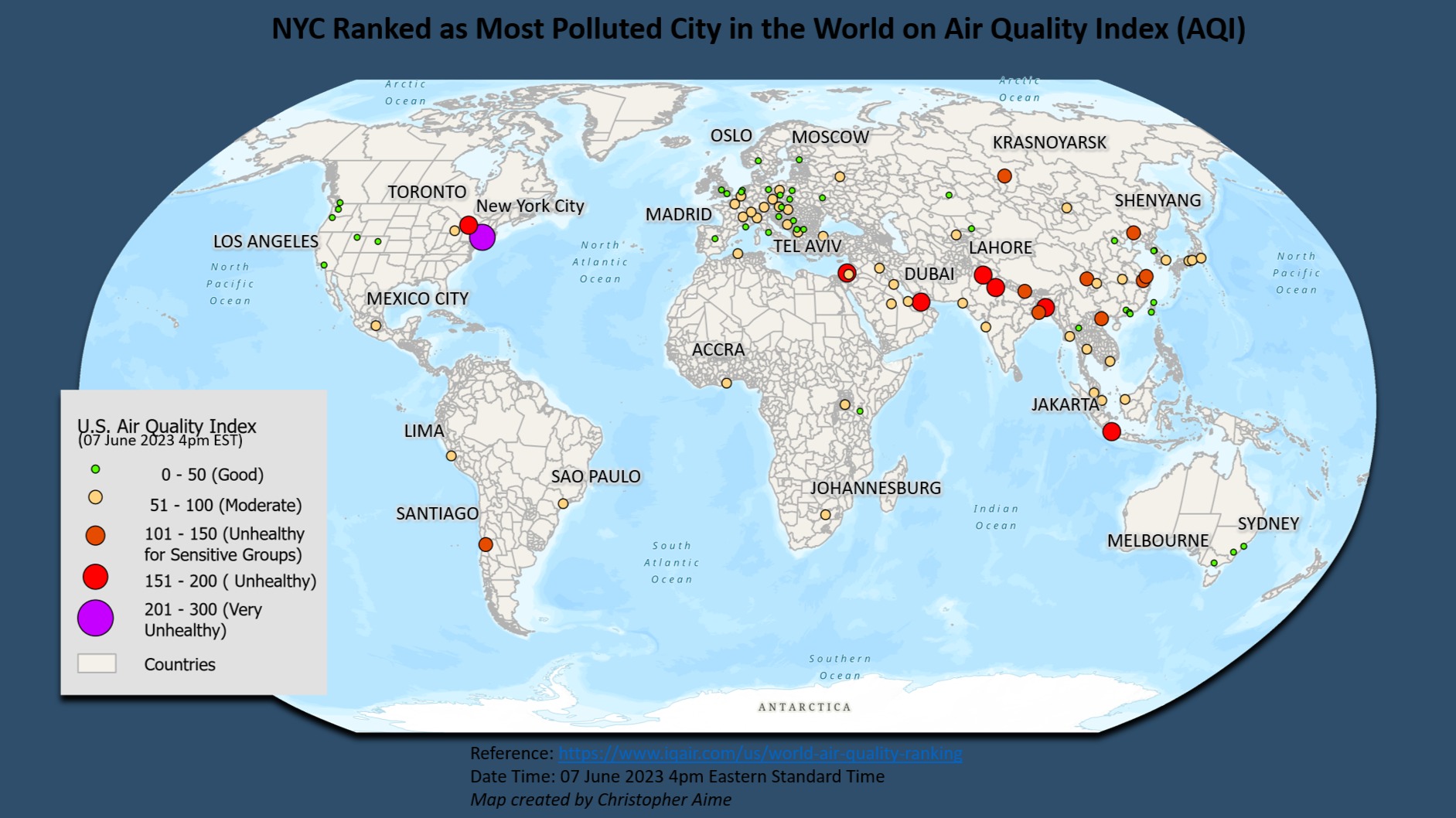Professor Roberts-Semple Discusses the Impact of Smoke Conditions from Forest Fires
Forest fires in Canada have caused hazardous air quality conditions that put residents of the northern US, but especially New York City (NYC) residents, at risk for respiratory health effects. A grey haze obscured the sun and can potentially cause a severe episodic air pollution event by the transboundary emissions. This week, on the air quality index (AQI), NYC is ranked as the city with the highest air pollution levels in the world, significantly worse than the most polluted cities in India and China. It is blanketed by smoke and fine particulate matter (PM2.5) that can have a profound impact on human health and restrict outdoor activities.
What is the potential impact of the smoke conditions on health?
Short-term or acute exposure to smoke can result in eye, nose, and throat irritation as well as coughing, sneezing, runny nose, and shortness of breath; whereas, long-term effects from exposure to elevated levels of PM2.5 in smoke can worsen health conditions such as asthma, heart disease and acute bronchiolitis.
What precautions should people take to mitigate the impact?
To reduce exposure, it is best to stay indoors; however, if you must go outdoors, wearing a N95 or KN95 mask can protect your cardio-respiratory system from smoke and PM2.5. While indoors, keep windows and doors closed, use air purifiers, especially with HEPA filters, and avoid the use of air conditioning systems. While most cooling systems do not typically bring air pollutants into your home, if dust particles and mold accumulate or grow inside your AC, they can be trapped as the AC recycles the indoor air and endanger your health.
How do these conditions affect ongoing climate change issues?
Local weather and climate systems can worsen impacts among vulnerable populations that have already suffered damage from previous events. The forest fires were not a major threat when they started in western Canada over the past weeks. It wasn’t until a storm system formed on the Atlantic coast a few days ago, that the smoke intensified and was blown to the south into US cities. The current conditions can result in an air pollution episode if stable atmospheric conditions persist for more than 3 days, and may exacerbate respiratory symptoms. The unusual combination of smoke, fine particles and meteorology in stagnant air: low wind speed and temperature inversion, can give rise to high air pollution levels extending over a large geographical area, resulting in emergency room visits and hospitalizations. In the absence of efficient air quality monitoring systems, a 5-day killer smog in 1952 caused by a combination of emissions from domestic fireplaces, factory chimneys and natural weather patterns that trapped air pollutants near ground level, was the worst air pollution episode that claimed thousands of lives in London.
Should only people who have health conditions be concerned?
Although air pollution can affect anyone, the elderly, children, pregnant women and individuals with preexisting health conditions such as heart disease, lung cancer, COPD, asthma and other breathing problems are more sensitive to air pollution exposure. PM2.5 in forest fire smoke can exacerbate existing respiratory problems and contribute to new health problems even among healthy individuals. Therefore, everyone should avoid exposure to fine particles in smoke since they can result in similar health effects to PM2.5 exposure from any other source.
How do these smoke conditions exacerbate toxins in communities that are already grappling with high exposure to air pollution?
Communities already faced with environmental stressors due to their proximity to heavy traffic, power plants, waste facilities and other emission sources will be more vulnerable to the smoke and fine particles, putting them at greater risk for respiratory and cardiovascular illnesses.
Dr. Roberts-Semple’s research focuses on the meteorological impacts on particle and gas-phase air pollutant concentrations, and their cumulative effects on respiratory health. Dr. Roberts-Semple’s teaching interests in the Geosciences include natural landscape processes, land use change and urban environmental issues of energy and resource consumption. She is currently exploring the use of low-cost technology to monitor air pollution.

